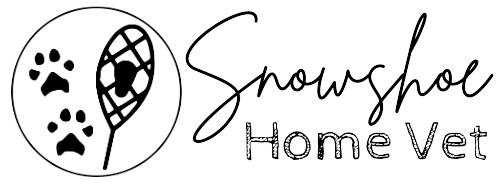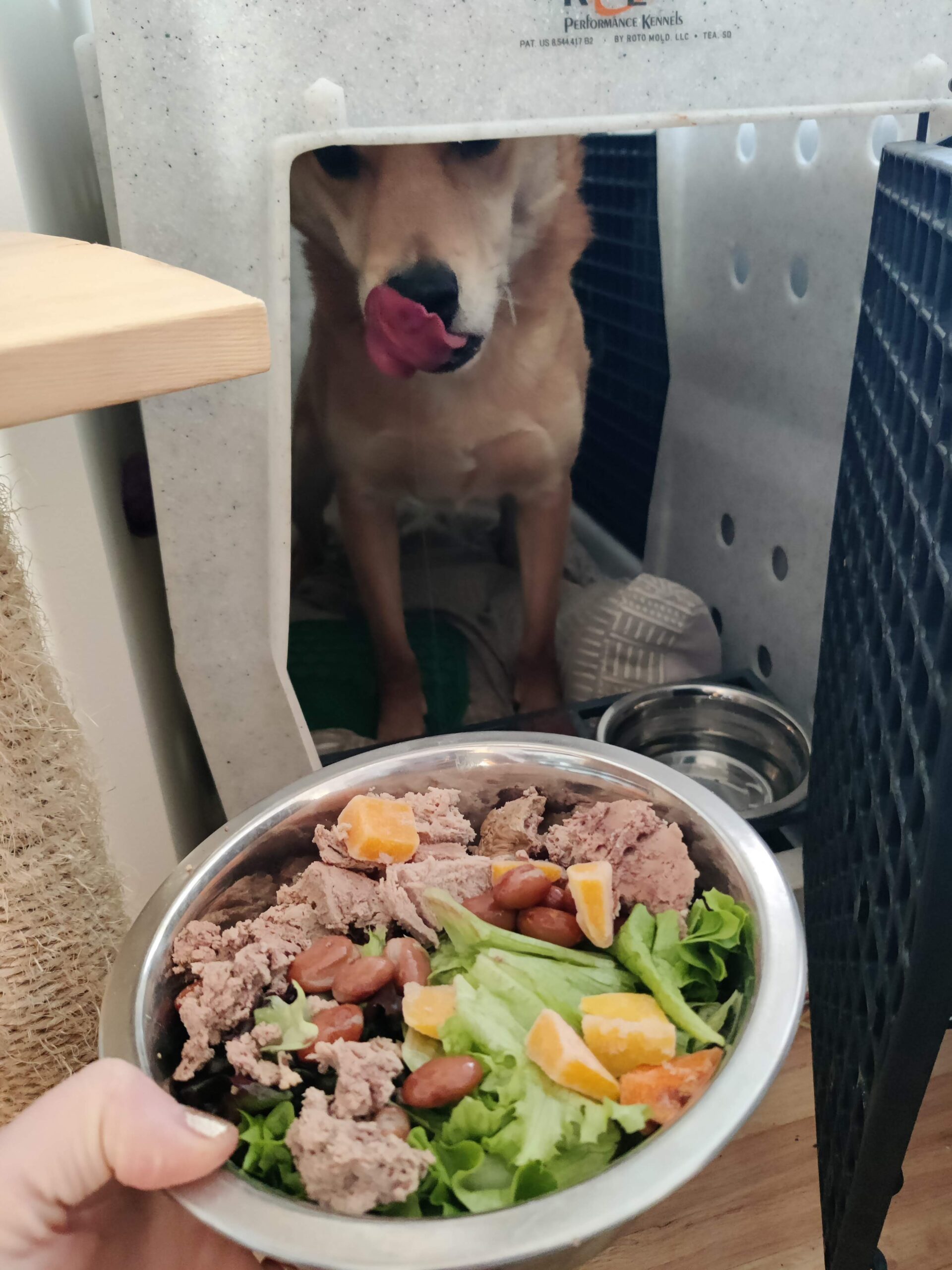Pet food is the controversial issue of the pet world these days. Everywhere you go, there are more messages telling you what is wrong and what is perfect about a given diet. However, is it really that cut and dry?
Of course not. Pet food of today ranges from boutique kibbles, to prescription veterinary diets, to raw and homemade diets – each with varying degrees of expertise put into their formulations.
My own personal feeding opinion is made from a variety of sources, experiences and advanced nutrition training. I will go through some pros/cons of different food types and tips for choosing a food from a certain category. Your veterinarian with a special interest in nutrition, or a board-certified veterinary nutritionist, will be your best source for getting advice tailored to your individual pet.
Kibble (Dry Food)
Kibble is what the majority of both cat and dog owners feed their pets. Some dogs do excellent on kibble. Kibble is convenient, readily accessible (in most cases), easy to use in food puzzles and training, and when properly formulated, meets the nutrient requirements of your pet.
The downsides to kibble for some pets is that they may have certain diseases that don’t do well with a dry food – including certain gastrointestinal diseases (especially reflux, megaesophagus), certain food allergies or diabetes.
For cats, I do not recommend kibble as a first choice. Kibble is quite high in carbohydrates which can lead to obesity and diabetes in our kitties. Cats who eat kibble tend to not drink enough water, leading to urinary issues including urinary blockages. There are kitties who are ‘kibble addicts’ and will only eat dry food. For these cats, I would only recommend using a kibble from a WSAVA-compliant company, and if a male cat – a urinary specific diet to encourage water consumption and reduce the chance of urethral blockage.
A note on ’boutique’ kibble: There are many kibble brands with claims of being ‘grain-free’, ‘holistic’, ‘natural’, etc. Unfortunately, most of these smaller companies (or even some of the larger ones), do not have anyone with advanced nutrition training (such as a DACVN or PhD in companion animal nutrition), and tend to spend more money on marketing than actually making sure their food is safe for your pets. I personally would not feed these brands unless I had no other choice. Kibble is made through extensive processing – where nutrients can get lost. Unless the company is batch testing their final product, you have no guarantee that what is on the label is what is in the actual kibble you get on the shelf.
If you do wish to feed kibble, I would recommend using the WSAVA guidelines for picking one out. In Canada, there are 5 brands that currently meet all WSAVA guidelines: Purina (all lines), Eukanuba, Iams, Hill’s (including Science Diet) and Royal Canin. Royal Canin is the only one in this list that manufactures in Canada, if that were to be a priority for you.
Canned Food
Canned food is also convenient, but considerably more expensive than kibble. Benefits to canned foods include increased moisture content (especially important in kitties) and consistent portion control. They may be a good option for dogs who have certain gastrointestinal diseases (like reflux and megaesophagus). For cats, canned foods also come in low carbohydrate options, which can be a good option for cats with obesity or diabetes (or any cat really).
I personally feed my cats canned food. Fancy feast pate, sometimes even Friskies pate to be precise (both made by Purina). It is affordable (for a canned food, still more expensive than most kibble), easy to portion and is low carb. Canned cat food with gravies tend to be higher carb and wouldn’t be my first choice for a cat.
I also keep a small stash of canned dog food for my dog Buster (Iams) for times when I have run out of an ingredient for his homemade food and don’t have time to get/cook more. He does well on canned food for his reflux, but tends to gain weight on it. The weight loss prescription canned foods don’t agree with his IBD, nor does kibble unfortunately.
Commercial Fresh Foods
This category primarily consists of raw foods, however there are options for prepared cooked foods as well – they just require a bit more searching. There are even raw options that can be safely cooked.
This category tends to be the most expensive and the least regulated. There will always be an increased risk of pathogens in raw diets. High pressure pasteurization (HPP) is used in some diets to reduce the potential pathogen load, but it is not 100% (as evidenced by the recent deaths to cats caused by avian influenza – the raw food diet in question was treated with HPP). Some pets with gastro-intestinal diseases do better with a cooked diet, because their digestive tract is already underperforming. Raw food takes more energy and digestive power than a cooked diet does.
Some raw food companies are nearly WSAVA-compliant. Instinct would be my top choice and Stella and Chewy would be a second, if an owner were set on raw food. The more consistency and expertise going into a raw food, the more expensive on average they tend to be.
From what I have found, the ‘cheaper’ raw food companies tend to have very vague ingredient lists, for example “chicken organs” (organs? what organs? liver has a far different nutrient profile than heart). They also tend to have no nutrient analysis stating things like how many calories are in a recipe per weight, how much calcium there is, how much fat, etc. The reason most likely that this information is missing is because a) the recipes are incredibly inconsistent from batch to batch, and b) they don’t care to know because they can legally sell you pet food without knowing what is in it. This is not the diet I want to trust to feed my pet every day.
Given the current avian influenza situation, I would not be recommending raw for cats at this time (2025).
Home Cooking
Home cooking is the wild west in pet food. There are SO MANY poorly formulated recipes on the internet, which is truly upsetting considering there are free formulation software programs that can be used to examine if a home-cooked recipe is missing nutrients (or toxic in other ones). Some include balanceit.com and hilarysblend.ca. These websites also offer properly formulated recipes for free, to be used with their supplements. Proper home cooking will likely be cheaper than feeding a higher-quality raw food diet, or canned diet, but more expensive than kibble. It is customizable to your pet’s preferences and disease considerations (Buster has reflux/IBD, allergies and is prone to weight gain, so he needed a formulation that addressed all three).
The unfortunate reality is that there are many nutritional diseases – diseases *caused* by poor formulation. Bone diseases such as rickets, heart disease, weakened immune systems, even seizures and death can be caused by nutritional imbalances. This is why it is of utmost importance that the food your pets eat is formulated properly, and no substitutions are made to the recipe.
The biggest drawback to home-cooking is the time it takes to prepare. I personally cook the meat in Buster’s recipe in large batches, and put together his meals at meal time. Meal-prepping was exhausting and just too big of a job to tackle all at once on a weekly basis (for me anyhow).
Making a homemade pet food requires a proper recipe – appropriately balanced, and tailored to your pets needs and activity level. Some recipes will be too high in calories for your pet – and cutting back on the calories in these recipes will also mean cutting back essential nutrients. A low-calorie or weight control formulation will be your best bet to reduce calories without reducing important nutrients. This goes for any type of pet food formulated for healthy, active pets (kibble, canned, raw, etc.).
Staying consistent and following the recipe will be key in your success, should you choose to make your own pets’ food. You will need a gram scale (you can buy cheap ones on amazon for example – I use this one and have for several years). If you would like to have a customized formula for your pet, contact your veterinarian about a nutrition consultation with a DACVN/DACVIM(N), or book an appointment with a veterinarian who has advanced training in diet formulation.
I personally work with a DACVN, even though I have advanced training in nutrition through CIVT. My clients and patients can take advantage of this during our appointment times. If you live in the service area and are interested in integrative medicine for your pet, please fill out our new client/patient application found on our contact page.


Leave a Reply